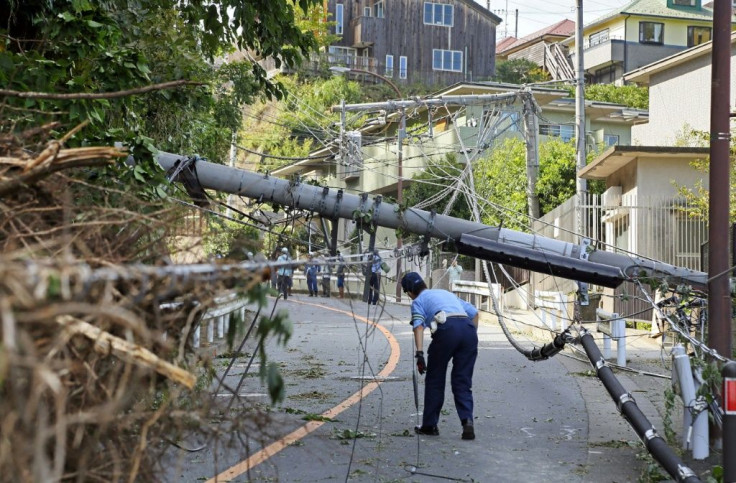Post-typhoon Blackout Raises Disaster Prep Questions In Japan

A lengthy post-typhoon blackout outside Tokyo that has left tens of thousands of people without power for more than a week is raising questions about preparedness in disaster-prone Japan.
"It's worse than we thought," an official from Tokyo Electric Power (TEPCO) told AFP, as authorities confirmed 45,000 homes were still without electricity 12 days after the powerful Typhoon Faxai barrelled through the Tokyo region.
The storm hit the capital with record-setting winds and brought travel chaos to Narita airport, but the effects have been felt worst in the Chiba region, east of Tokyo.
Temperatures soared after the storm, and two people died of heatstroke in the days following when nearly one million homes were without power and more than 80,000 without water.
TEPCO dispatched 12,000 workers to the region, along with 4,000 staff from other regional companies, but admitted it initially underestimated the scale of the problem.
"We weren't able to immediately assess the extent of the situation," a TEPCO spokesman said.
"As we've been able to access various places, we've found break points where cables are severed and poles have been toppled."
Part of the problem lies in the fact that power lines in Japan are largely above ground.
But experts also accuse the government and utility companies of being unprepared.
"If companies were better prepared, the situation wouldn't have been this serious," said Hirotada Hirose, a retired professor who has written several books on disaster management.
"There is a failure to anticipate. They didn't envisage the worst," he told AFP.
20,000 homes damaged
He said measures including minimising the risks of trees falling on power lines and prepositioning work crews before the storm could have helped the recovery move faster.
And he accused the government of underestimating the storm's impact.
"The state wasn't aware of the gravity of the disaster, it was too optimistic, as the reassuring comments of the government spokesman showed," he charged.
But government spokesman Yoshihide Suga defended the response: "We did what was necessary," he told journalists asking about the criticism.
Local officials said Wednesday that the storm damaged at least 20,000 homes in Chiba, a sharp upward revision of an initial estimate of 4,000.
In a sign of the growing pressure on the government to act, Finance Minister Taro Aso said Tuesday that around $12 million would be set aside to support recovery in typhoon-affected areas.
But a TEPCO official warned Wednesday that power was not likely to be fully restored before September 27, with further delays possible.
"Many homes are still without power, and their roofs have been washed away. People are living on the ground floors as best they can, but with the rain, and it gets dark early, it's hard," said Miyuki Ishii, a resident of the Kyonan-machi area, where many homes were damaged by the storm.
Hirose said he hoped the damage would serve as a wake-up call to government and utility officials.
"This type of typhoon has occurred before, but there's a risk of the frequency increasing. This kind of scenario must be envisaged and prepared for as something that is no longer exceptional," he said.
© Copyright AFP 2024. All rights reserved.











